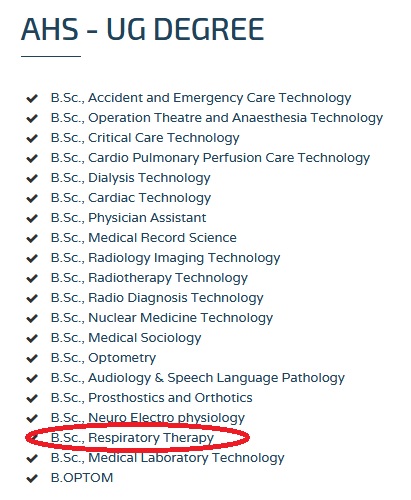Biomechanics, Applied Anatomy & Kinesiology BPT Question Bank : web.tnmgrmu.ac.in
Name of the University : The Tamilnadu Dr. M.G.R. Medical University
Degree : BACHELOR OF PHYSIOTHERAPY B.P.T.
Subject Code/Name : 6215/Biomechanics, Applied Anatomy And Kinesiology
Year : II
Paper : IV
Document Type : Question Bank
Website : web.tnmgrmu.ac.in
Download Model/Sample Question Paper :
2009-2012 : https://www.pdfquestion.in/uploads/web.tnmgrmu.ac.in/PHYSIOTHERAPY/3713-746256KU.pdf
TNMGRMU Physiotherapy Question Bank
[KU 1002X] Sub. Code: 6215
BACHELOR OF PHYSIOTHERAPY DEGREE EXAMINATION :
Revised Non-Semester Regulations
Related / Similar Question Bank :
TNMGRMU BPT General Medicine & Surgery Question Bank
February 2009
Paper II – BIOMECHANICS, APPLIED ANATOMY AND KINESIOLOGY
Q.P. Code : 746215
Time : Three hours
Maximum : 100 marks

Answer All questions :
Draw suitable diagrams wherever necessary :
I. Essays: (2 x 15 = 30)
1. Describe in detail about the articulating structure, kinematics of tibiofemoral joint and related pathomechanics.
2. Explain the elbow joint and its function.
II. Short Notes: (10 x 5 = 50)
1. Synovial joint and its sub classification.
2. Osteokinamatics of wrist joint.
3. Passive insufficiency.
4. Dynamic stability of glenohumeral joint.
5. Power grip.
6. Trabecular system of hip joint.
7. Supinator twist.
8. Tonic and phasic muscles.
9. Metatarsal break.
10. Determinanats of gait.
III. Short Answer: (10 x 2 = 20)
1. Anatomical pulleys.
2. Moment Arms.
3. Friction force.
4. Synovial fluid.
5. Tide mark.
6. pes cavus.
7. Differentiate collagen and elastin.
8. Horizontal steering muscles of shoulder joint.
9. Differentiate cubitus valgus and cubitus varus.
10. Facet joint.
August 2009
I. Essays: (2 x 15 = 30)
1. Describe the function of vertebral column.
2. General properties of connective tissue.
II. Short Notes: (10 x 5 = 50)
1. Concurrent force system.
2. Winging of scapula.
3. Supinated foot.
4. Lumbar pelvic rhythm.
5. Arthokinematics of tibiofemoral joint
6. Gibbus.
7. Volar plate.
8. Centre of gravity.
9. Radio carpal joint.
10. Explain creep and stress relaxation.
III. Short Answer: (10 x 2 = 20)
1. What is sway envelope?
2. What is Wartenberg’s sign?
3. What is titin and mention its functions?
4. Patella alta and patella bajja differentiate.
5. Differentiate rehension and precision.
6. Toe region.
7. Pes planus.
8. Joint capsule.
9. Mechanical advantage.
10. Fibrous joints.

February 2010
I. Essays: (2 x 15 = 30)
1. Describe in detail about the wrist joint and its function.
2. Define gait and explain in detail about the pathomechanics of gait.
II. Short Notes: (10 x 5 = 50)
1. Kinematic chain with suitable examples.
2. Scoliosis.
3. Active insufficiency.
4. Spurt and shunt muscles.
5. Lumbricals.
6. Role of extensor mechanism in fingers.
7. Tennis elbow.
8. Supinator twist.
9. Locking and unlocking mechanism of knee joints.
10. Static stability of dependant arm.
III. Short Answer: (10 x 2 = 20)
1. Concurrent force systems.
2. Quadriceps lag.
3. Shear force.
4. Coupled motions.
5. Ligament of bigelow.
6. Sesamoiditis.
7. Vertical steering muscles of shoulder joint.
8. Coupled motion.
9. Centre of pressure.
10. Slow – Twitch oxidative fibre.
[KX 1002X] Sub. Code : 6215
I. Essays: (2X15=30)
1. What is Muscle Tension? Classify it and explain in detail length, tension relationship and factors affecting Muscle Tension.
2. Describe in detail the anatomy of Lumbar Vertebra. Explain in detail the Kinetics and Kinematics of Lumbar region.
II. Short Notes : (10X5=50)
1. Pronation Twist.
2. Static Stabilization of Shoulder.
3. Effect of Muscle Paralysis in Gait.
4. Parallel Force System.
5. Torque.
6. Coxa Valga.
7. Nurse – Maid’s Elbow.
8. Tonic and Phasic Muscle.
9. Plantar arches and their function.
10.Explain Tensile forces with example.
III. Short Answers: (10X2=20)
1. Claw toe and Hammer toe.
2. Force and Acceleration.
3. Cubitus Valgus and Cubitus Varus.
4. What is Patella Aita?
5. What is Flexion Relaxation Phenomenon in Spine?
6. Gibbus.
7. Explain Resting angle of Scapula.
8. What is angle of Wibers and its importance?
9. Scapulo Humeral and Lumbar Pelvic Rhythm.
10.Difference between Pronation and Supination Twist.
August 2011
I. Long Essays : (2X20=40)
1. Describe in detail about Newton’s laws of motion.
2. Discuss the biomechanical analysis of running gait versus walking.
II. Short Notes : (8X5=40)
1. Calculation of centre of gravity of the body.
2. Muscular weakness and atrophy
3. Closed chain motion of the elbow.
4. Functional position of the wrist.
5. Analyze placing the hand behind the head.
6. Balancing of the head and vertebral column.
7. Load-deformation curve.
8. Loading of the foot.
III. Short Answers : (10X2=20)
1. Ballistic movement.
2. Articularis genu.
3. Postural set.
4. Corset muscle.
5. Tarsal canal.
6. Common hip axis.
7. Kinesthesia and proprioception.
8. Pelvic balance.
9. Gluteus medius limp.
10.Patellar plicae.
February 2012
I. Elaborate on : (2X20=40)
1. Explain the structure configuration of hip joint in relation to weight bearing in unilateral and bilateral stance along with factors contributing for its stability.
2. Describe the normal curves of vertebral column and discuss the factors responsible for its mobility and stability.
II. Write notes on : (8X5=40)
1. Parameters of gait
2. Scapulo humeral rhythm
3. Determinants of gait
4. Bursae around knee
5. Talocalaneo navicular joint
6. Optimal posture
7. Reverse action
8. Pivot joint
III. Short Answers : (10X2=20)
1. Synergist
2. Angular Velocity
3. Concentric Exercise
4. Sacral vertebrae
5. Acromic clavicular joint
6. Lumbricals
7. Lordosis
8. Line of gravity
9. Second class lever
10. Law of inertia
Which is the vertical and horizontal steering muscles of the shoulder joint?